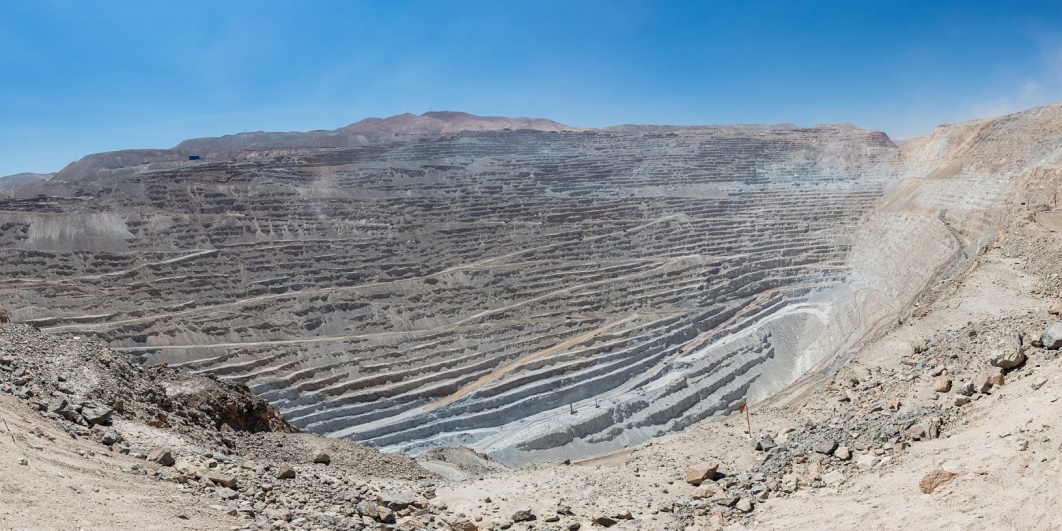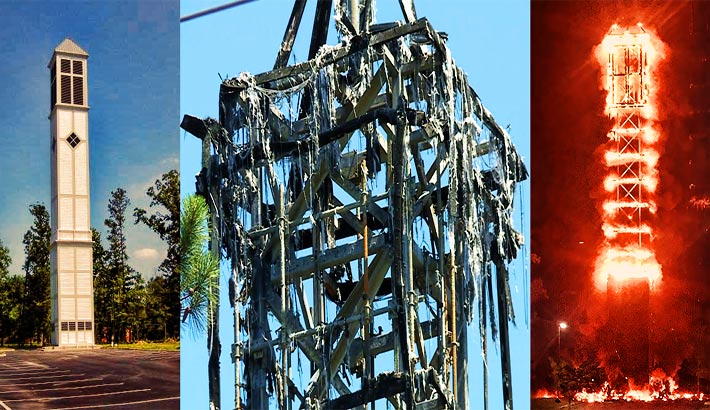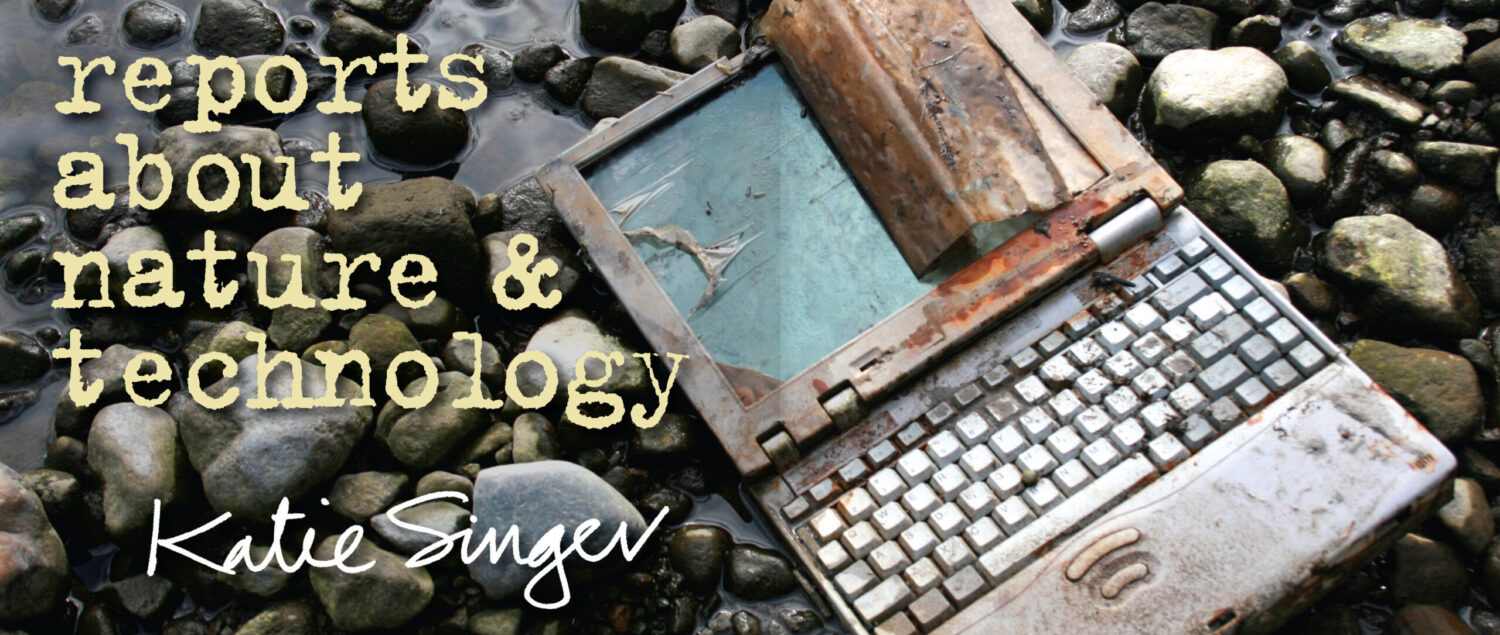Policies for More Ecologically-Sound Tech
by Katie Singer
adapted from a May 23, 2023 presentation
at Canadians for Safe Technology
Last month, I spoke at Canadians for Safe Technology about our technosphere’s impacts on nature and unexplored policies for more ecologically-sound tech.
As I readied to publish this talk, I read last month’s Gallup poll about the country’s most important problem. U.S. Americans’ top four mentions go to the government (19%), the economy (13%) immigration (13%), and inflation (10%).
I’m sobered by what got no mention: corporate influence on government; biodiversity loss; manufacturing’s impacts on nature; technology’s impacts on work (AI—artificial intelligence), technology’s impacts on health (addiction, attention deficit, cancer); technology’s consumption of fossil fuels and water; technology’s dependence on international supply chains; and lack of professional engineering due diligence to manufacture and deploy new electrical and telecom infrastructure.
This is such a mouthful—but none of these made it to Gallup’s list!
I think: we need massive education. Consider this talk an introduction.
In 2017, my city council held a public hearing about a proposed ordinance to allow 5G cell sites on public rights-of-way. For two minutes each at the podium, about 30 people lined up. Most spoke about the negative health and wildlife impacts from cell sites’ electromagnetic radiation emissions.
I noted that our city routinely endured 50-mile-per-hour winds. I asked if the city would require a professional engineer’s (PE’s) certification that each cell site’s fire and collapse hazards were mitigated before equipment was installed. Also, in the event of a fire or collapse, who would be liable—the city, the telecom corporation or the property owner?
The man who spoke after me—who favored 5G—suggested that I was nuts. “Come on!” he said. “This is not new technology!”
A retired physicist reported that his quick Internet search led to dozens of cell tower fires.
After the public testimony, our city attorney took the podium. “Councilors,” he said, “in regard to Ms. Singer’s comments, we trust the telecom corporations.”
The ordinance passed to allow 5G.
The physicist handed me his list of fires; I posted it on my website.
I wondered, repeatedly, why didn’t my questions work?
The Internet’s invisibles
The Internet is the largest thing that humanity has manufactured—and yet its safety hazards, ecological impacts and human rights violations remain largely invisible. In pursuing realistic policies for safer telecommunications, here are two realities: 1) Eventually, every electronic device—including lightbulbs, cell sites, power lines, smart meters and mobile phones—will fail. How do we ensure that they fail safely?
2) Living creatures depend on healthy, biodiverse ecosystems. But manufacturing, operating and discarding computers and telecom infrastructure ravage ecosystems and violate human rights. What policies could move us toward an Internet within our ecological means?
Before answering these questions, we need to know what going online requires.
To begin, every user needs electricity, which typically comes from natural gas, coal, hydro or nuclear power. During their manufacture, operation and discard, solar power and industrial wind facilities also have profound, ecological impacts—but we rarely include these when we calculate “sustainability.”
How to manufacture a computer
Next, every user needs a computer. Starting with copper, which conducts electricity, a computer needs about 50 ores. For every kilogram of mined copper, at least 210 kilograms of waste are generated. By 2025, demand for copper will exceed supply.

Chuquicamata, Chile—the world’s largest copper mine
Diego Delso, delso.photo.
To hold charge, a mobile device uses a battery—which probably uses cobalt. Cobalt is most often extracted in the Democratic Republic of Congo (DRC) under armed conflict and/or human abuse. Cobalt mining cuts down trees by the millions, contaminates water with toxic effluents and fills air with toxic dust. According to Amnesty International, most cobalt miners work without gloves, masks or other gear that helps prevent lung and skin diseases. Child miners work up to twelve hours per day for one or two dollars. Children have been buried alive mining for cobalt.
Coltan also holds charge in batteries. In the DRC, coltan mining has led to mass rapes and more loss of life than any other single situation since World War II.
Lithium, another metal used for batteries, typically goes through an evaporative process. Filtering one ton of lithium uses about 500,000 gallons of water (almost two million liters)—which depletes nearby communities’ cooking, bathing and farming water. A lithium mine now under construction at Thacker Pass, Nevada, will use five million gallons of water daily.
Transistors, a computer’s basic building blocks, process and store data. They provide memory and apps, amplify sound and much more. Manufacturers produce 1000 times more transistors than farmers grow grains of wheat and rice combined.
Transistors are made from silicon, an element not found in nature in pure form. Manufacturing silicon requires quartz gravel, a pure carbon like the Tar Sands’ petcoke, and hard, dense wood. These materials are transported to a series of fossil fuel-intensive, toxic waste-emitting smelters and refineries. A smelter might keep at 3000° Fahrenheit (1659° Celsius) for six or seven years at a time. Smelters are powered by coal, natural gas and/or nuclear power—because solar and wind provide only intermittent power; and if electricity to a smelter is interrupted, it can explode.
To make transistors electrically conductive, they’re coated with hundreds of chemicals—and rinsed, after each application, with ultra-pure water. One eight-inch silicon wafer can use over 2000 gallons (almost 8000 liters) of ultra-pure water. That water can become toxic waste. In 2013, semiconductor fabs in Tainan, Taiwan generated 19 million tons of wastewater, about 2/3 of the wastewater generated by the entire city.
Transporting a computer’s raw materials from mines to smelters, refineries and assembly plants requires cargo ships powered by dirty bunker fuel, and planes, trains and trucks typically powered by fossil fuels. Of course, each of these great vehicles needs to be manufactured.
Indeed, before an end-user turns a computer on for the first time, it will have consumed 81% of its lifetime energy. The remaining 19% is consumed while the laptop operates and gets discarded or recycled.
But doing anything online needs much more than computers.
How to access the Internet
We need wired or mobile access to the Internet. Internet service requires satellites, transmitters, modems, cables, Wi-Fi hotspots and/or cell sites. Building and operating this infrastructure also involves energy and mining and water and generates more end-of-life waste.
The semiconductor industry reports that by 2040, computers will require more electricity than the entire world can generate. Operating 5G, the fifth generation of mobile networks, with the least amount of greenhouse gases will require building the equivalent of 36 new nuclear reactors.
Data storage
Then, everything online—videos, games, social media, websites, bank records, GPS records, stores, presentations like this one—needs data storage.
Some data centers are so large they can be seen from outer space. Inside, data centers are filled with computers—and cooling systems that guzzle energy and water. If data centers were a country, they’d rank fifth in energy consumption. And this does not include manufacturing those servers and cooling systems, which get replaced about every three or four years.
At the end of their usable lives, electronics do not biodegrade. They’re hazardous waste—and they need transport to their dumpsite.
Consider the Internet a sterling example of unlimited, unregulated growth. How do we reduce its ecological impacts and human rights violations?
Policies for safer, more ecologically-sound tech
POLICY #1 recognizes Boston University Professor Bill Torbert’s idea: Unless I’m aware that I’m part of the problem, I can’t be part of the solution. To minimize the Internet’s impacts, users first need awareness of what manufacturing, operating and discarding computers and infrastructure require. To gain awareness, would every computer user trace the supply chain of one substance used in manufacturing their computer?
These lists are posted with resources for research at https://katiesinger.substack.com/p/enlightenment.
With awareness of supply chains, would users collaborate to reduce the Internet’s ecological hazards and human rights violations?
POLICY #2 When I started learning what’s behind my screen, I challenged myself to decrease my energy and media consumption by 3% per month. I walked more, dried clothes outside and grew more vegetables. On Zoom calls, I prefer audio-only—because one second of video can have 60 still photos. That’s a lot of data and a lot of energy.
I may have reduced my consumption by 3% per month—but I also built two new websites. When COVID started, my video-watching expanded like crazy.
So, I have actually increased my energy and media consumption.
Still, I aim to reduce.
Gerry McGovern (Top Tasks) reports that we never use 90% of the data we generate (and store). Therefore, eliminate unused data. If you’ve got a business, hire a data curator. McGovern’s also calculated that in-person meetings might use less energy than online meetings!
Wired connections use less energy than mobile ones.
If you have a website, color uses more data (and energy) than black and white. Text uses less data (and energy) than images. Flashing images and videos use much more data than still photos.
Wait at least four years to upgrade. New software can make your computer and printer incompatible…and lead to buying new hardware. Buying a new computer and/or a new printer means engaging the global super-factory.
https://ifixit.com posts free repair manuals on 80,000 items.

photo credit: cottonbro studio/Pexels.com
POLICY #3 comes from Cris Rowan: no electronics for children until they have mastered reading, writing and math on paper. Besides helping children develop as nature designed—without an electronic interface—this policy delays engaging the global super-factory.
Build skills—like drawing a map of your neighborhood or cooking a meal—that don’t require electronics.
POLICY #4 When your school or business purchases electronics in bulk, buy only from manufacturers who verify that children are not involved in mining, workers are paid fairly and not exposed to toxins. Consider guidelines at pactworld.org and the Basel Action Network.

Cell tower in a church steeple. Electrical-mechanical fire.
Hanover, VA June, 2020. Photo credit: Hanover Fire and EMS.
POLICY #5 recognizes that no technology is safe until proven safe. To prove that electrical infrastructure is safe, insist that municipal officials require documentation that professional engineers have certified that fire and collapse hazards have been mitigated. PEs are licensed subject-matter experts. They hold liability for their reports. No one drives over a bridge, lets a substation go live or drinks water until a PE has certified its safety.
Let’s return to my city attorney telling our councilors, “We trust the telecom companies.” He likely said this because federal laws support telecom corporations and limit ways that municipalities can protect their interests—and he likely does not want our city sued by a telecom corporation. Today, if I attended a public hearing regarding 5G (or smart meters or a utility-scale solar or wind system), I would say, “Please show the PE’s certified report that fire and collapse hazards have been mitigated.” I would politely repeat, “Show the documentation” until the attorney produced it—or admitted that he did not have it.
POLICY #6 comes from France, where manufacturers may only call a product “zero-emitting” or “carbon-neutral” if they can prove that this is true from the product’s cradle to its grave. In France, manufacturer can only use these terms when they have proof.
Could we extend this law to include “green,” “clean” and “sustainable?” Right now, these are just marketing terms—with no standards and no monitoring.
POLICY #7 comes from a friend who realized, decades after becoming a telecom designer, that his teachers never taught him to consider the ecological impacts of unlimited telecom growth.
Policy #7 goes to schools. Would schools require students of engineering, environmental studies and business to trace the supply chains of their computers’ substances and biological impacts?
Would engineering schools require students to design for a product’s second life—at the design stage? A battery might not be able to power a 3000-pound car for more than a few years; but in its second life, it could charge laptops in a community with minimal electricity.
Would engineering schools encourage students to design biodegradable electronics?
Would business schools require studying the economic and ecological impacts of extracting ores and manufacturing chemicals? What would our tech look like if we limited energy use, extractions and refining to local resources? could we still do PowerPoints like this one?
Would medical schools require study of electronic interference between, say hybrid or electric vehicles and medical implants—and ways to reduce exposure to electromagnetic radiation?
Decades ago, the late ecological economist Herman Daly spelled out two policies for a sustainable society, “Don’t take from the Earth faster than it can replenish; and don’t waste faster than the Earth can absorb.” While we probably can’t abide by these directions in a digital, industrial society, I’d surely welcome joining with others who aim to move toward them.
References
Asianometry, “The Big Semiconductor Water Problem.” https://www.youtube.com/watch?v=Dq04GpzRZ0g.
Belkhir, Lotfi and A. Elmeligi, “Assessing ICT global emissions footprint: Trends to 2040 & recommendations,” J. of Cleaner Production, 2018; https://doi.org/10.1016/j.jclepro.2017.12.239
Calma, Justine, “Water shortages loom over future of semiconductor fabs in Arizona,” 8.18.21; https://www.theverge.com/22628925/water-semiconductor-shortage-arizona-drought
Eichstaedt, Peter, Consuming the Congo: War and Conflict Minerals in the World’s Deadliest Place, Lawrence Hill Books, 2011.
Goonan, Thomas G., “Flows of selected materials associated with world copper melting,” U.S. Geological Survey, Open File Report, 2004-1395.
Hayes, Brian, “The Memristor,” American Scientist, 2011.
Kara, Siddharth, Cobalt Red: How the Blood of Congo Powers Our Lives, St. Martin’s Publishing Group, 2023.
Katwala, Amit, “The spiraling environmental cost of our lithium battery addiction,” Wired, August 5, 2018; https://www.wired.co.uk/article/lithium-batteries-environment-impact
Lakota Peoples’ Law Project. https://lakotalaw.org
Leffer, Lauren, “Too Many Servers Could Mean No New Homes in Parts of the UK,” Gizmodo, 7.28.22. https://gizmodo.com/data-centers-london-tech-electric-grid-1849342150
Lepawsky, Josh, Reassembling Rubbish: Worlding Electronic Waste, MIT Press, 2020.
Mills, Mark P., “Energy and the Information Infrastructure,” 2018. https://www.realclearenergy.org/articles/2018/12/11/energy_and_the_information_infrastructure_part_3_the_digital_engines_of_innovation_jevons_delicious_paradox_110368.html
Needhidasan, S., et al., “Electronic waste–an emerging threat to the environment of urban India,” J. Environ Health Sci. Eng., Jan. 20, 2014; http://www.ncbi.nlm.nih.gov/pmc/articles/PMC3908467.
Singer, Katie, “How to prevent waste and make money,” a profile of Eric Lundgren. https://ourweb.tech/letter-37
Sovacool, Benjamin K., “The precarious political economy of cobalt: Balancing prosperity, poverty and brutality in artisanal and industrial mining in the Democratic Republic of Congo,” Extractive Industries and Society, July, 2019. https://www.sciencedirect.com/science/article/abs/pii/S2214790X1930084X
Troszak, Thomas, “Why Do We Burn Coal and Trees for Solar Panels?” https://www.researchgate.net/publication/335083312_Why_do_we_burn_coal_and_trees_to_make_solar_panels
Worstall, Tim, “More People Have Mobile Phones than Toilets,” Forbes, March 23, 2013.
https://www.techrepublic.com/article/how-conflict-minerals-funded-a-war-that-killed-millions/
https://www.sciencenews.org/article/lithium-mining-flamingo-technology-climate-change
https://www.sciencenews.org/article/search-new-geologic-sources-lithium-could-power-clean-future
“Greenhouse gas emissions from global shipping, 2013-2015;” https://theicct.org/sites/default/files/publications/Global-shipping-GHG-emissions-2013-2015_ICCT-Report_17102017_vF.pdf
https://spectrum.ieee.org/energy/environment/your-phone-costs-energyeven-before-you-turn-it-on
https://www.nbcnews.com/tech/internet/drought-stricken-communities-push-back-against-data-centers-n1271344 Olivia Solon, June 19, 2021.
“5G and the Canadian Data Centre Rush,” by Joyce Nelson.
Worldwide, 5G would annually need 59 giga watts hours of electricity. The largest new-generation nuclear reactor (EPR) produces 1.65 GW of continuous power. Powering 5G internationally would therefore require 59 ÷ 1.65, which equals 36 EPRs. (See Miguel Coma’s reports at www.ourweb.tech/letters.)
For a modern description of how energy efficiency increases energy use, read David Owen’s The Conundrum: How Scientific Innovation, Increased Efficiency, and Good Intentions Can Make Our Energy and Climate Problems Worse, Riverhead, 2011.
My reports about the ecological consequences of solar, wind and e-vehicles are available at https://katiesinger.substack.com and www.ourweb.tech/letters. I strongly recommend Jeff Gibbs’ film, “Planet of the Humans” and Bright Green Lies—the book by Derrick Jensen, Lierre Keith and Max Wilbert, and the film of the same title by Julia Barnes. For problems with e-vehicles, see Robert N. Charette’s 2023 e-book, published by IEEE, The EV Transition Explained. https://spectrum.ieee.org/ev-ebook.pdf.










